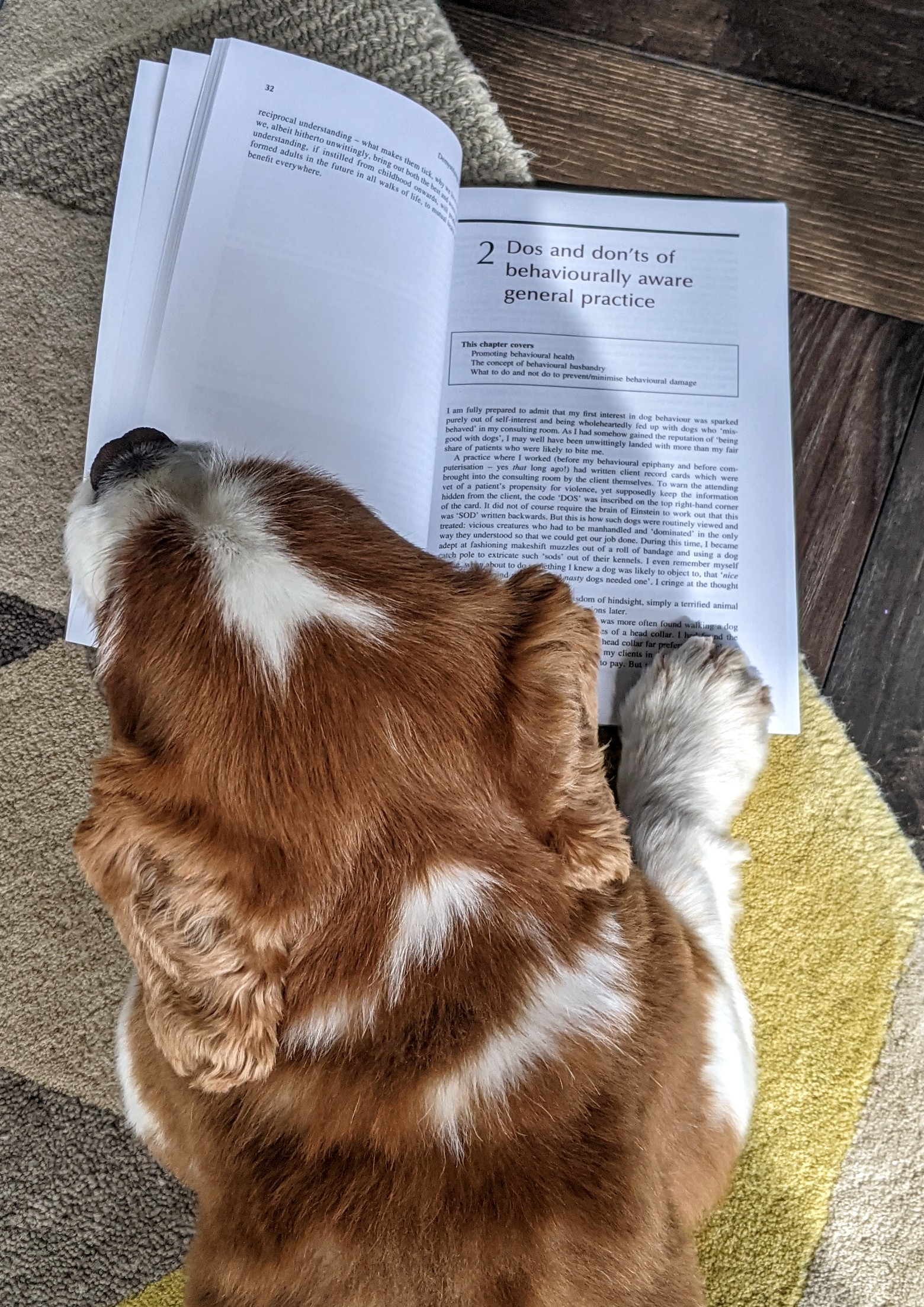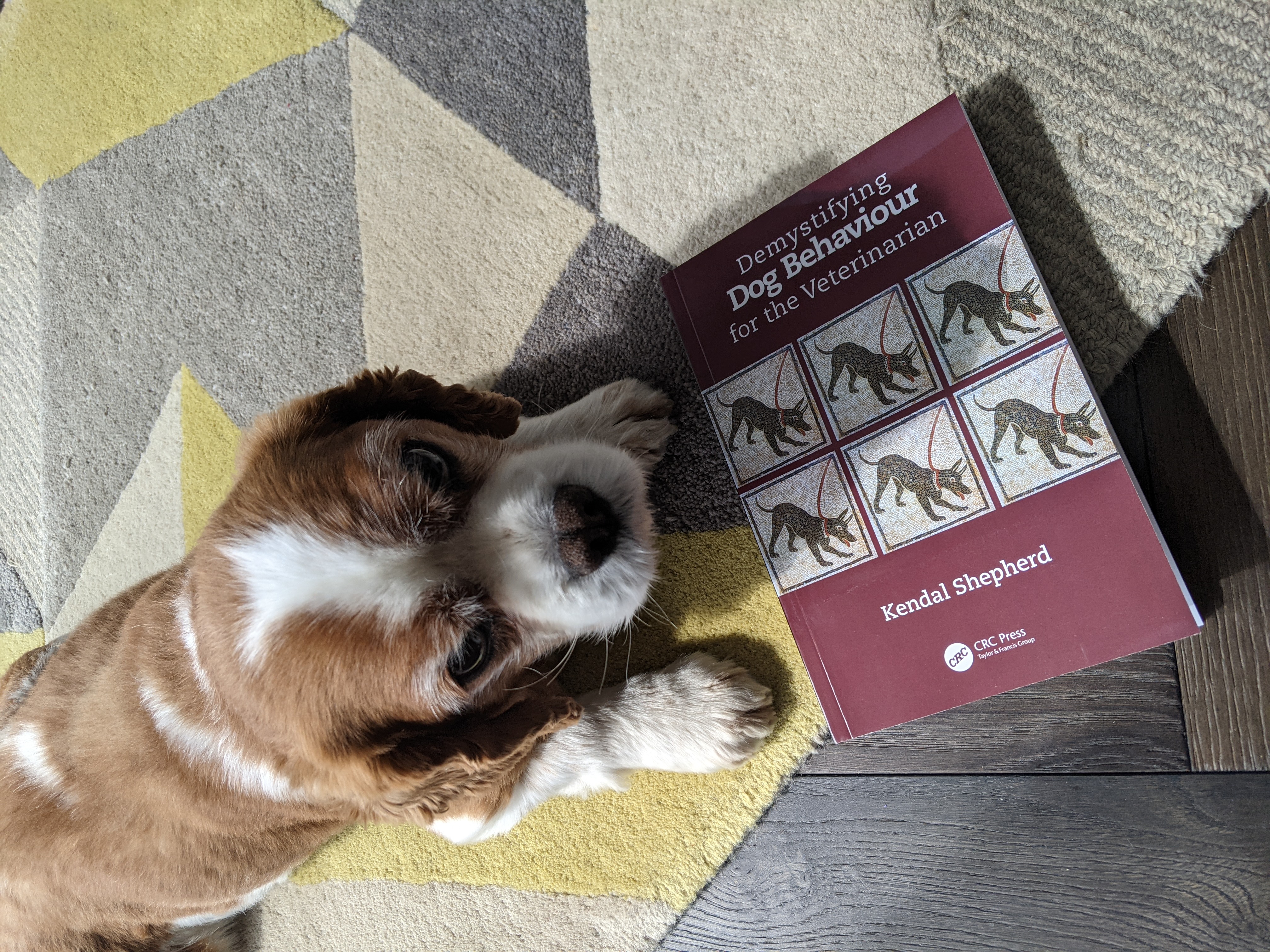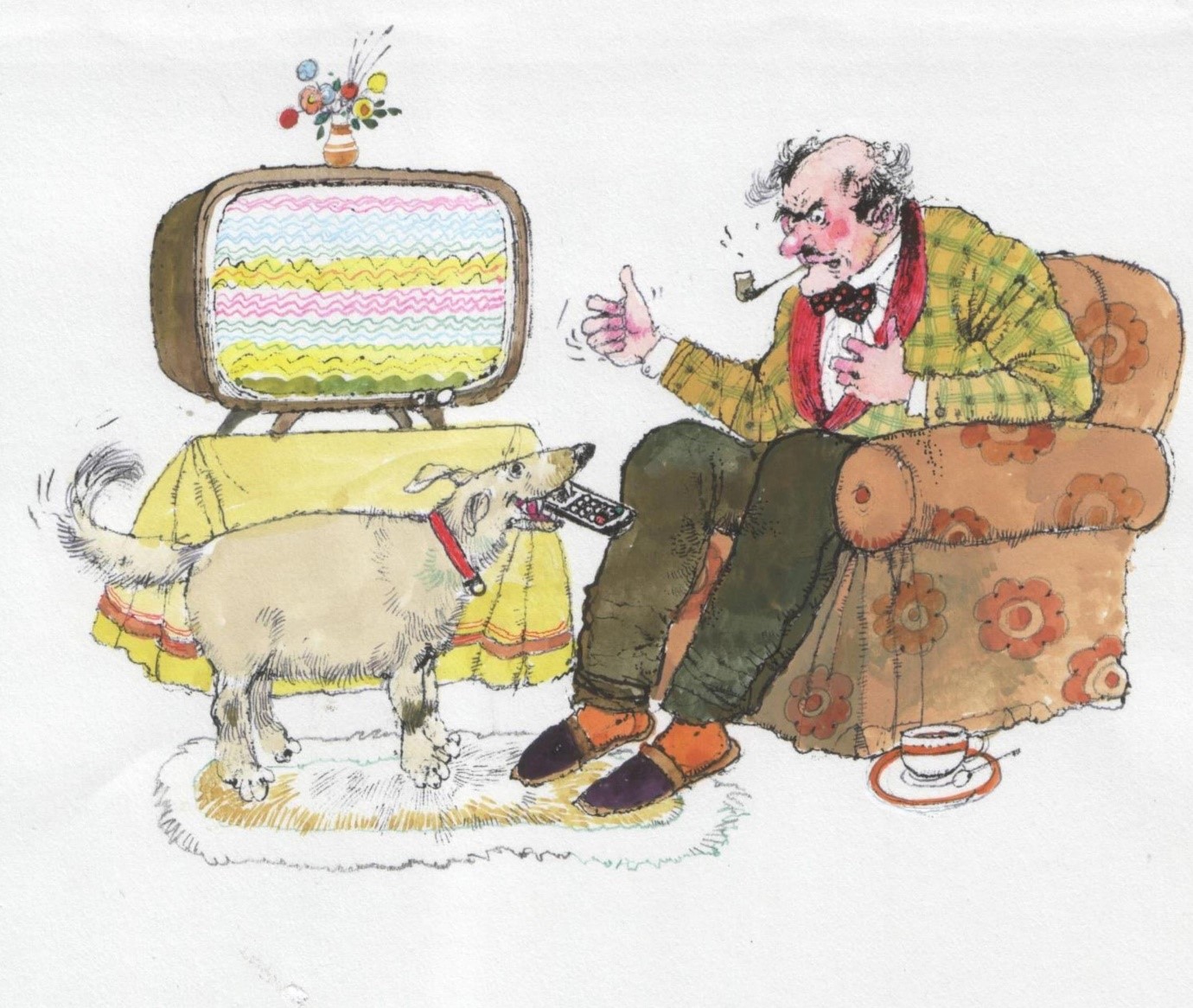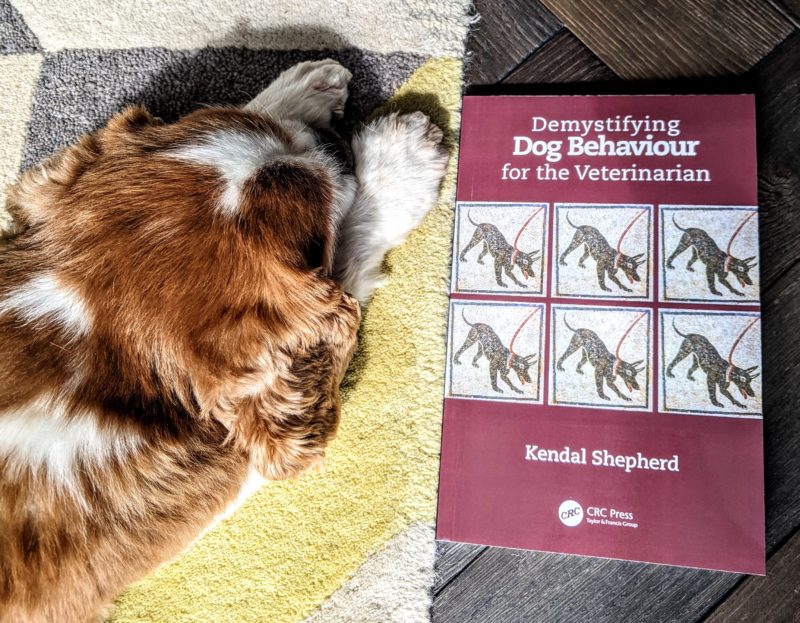It’s a bold confession from a book editor, but it’s rare that I read a manuscript cover-to-cover. Sure, I scan all my books, I dip in and out, reading particular chapters of interest, flagging formatting issues, checking references are correct, that everything promised is there, etc. Not the case for Kendal Shepherd’s Demystifying Dog Behaviour. From the first word of the Introduction I was hooked; I didn’t stop reading until the last sentence of the Afterword. Because although Kendal’s book is ostensibly “for the Veterinarian” (and it’s a must-read for any small animal vet), it’s accessible and relevant to any dog guardian. It has changed the way I understand and interact with my own dog, and I truly believe it’s enhanced our relationship and his well-being tenfold.
At the heart of Kendal’s book is the concept that dogs are engaged in a constant battle to understand and meet our alien, often inconsistent human demands. When we accuse our dogs of being ‘bad’, it is in fact we who have been bad: bad at communicating what we want of them, bad at identifying the clear signals they’ve given us, bad at dedicating the time to familiarise ourselves with their individual needs and history. Demystifying Dog Behaviour aims to change that, giving us the tools to communicate more effectively with our companion animals and understand them as ‘dogs’ rather than naughty children.

Kendal kicks off her book with the basics: in Chapter 1, she asks ‘What is a dog?’, explaining how we have ‘created’ the domestic dog over many thousands of years, selecting for tameness, and how this has shaped the dog-human relationship. She explores the upsides and the downsides to being a dog, and most importantly, the conflicting human requirements of dogs. As Part 1 progresses, she demonstrates practical behaviour principles and interrogates the meaning of ‘obedience’: the difference between training and behaviour modification, and reward versus punishment in canine and human perception. Part 2 delves deeper into the relationship between dog and owner, explaining the ‘Ladder of Aggression’ and her ‘Whose Idea is it?’ rule: a painless way of avoiding disagreement between dog and owner. As Kendal explains, dogs are learning constantly and any routine interaction between dog and owner has the potential to steer behaviour in right direction (or the wrong one!) So we must ask themselves, whatever our dog is doing at any time, ‘whose idea was this particular behaviour?’
Is he running about, barking at passers-by, emptying the wastepaper bin or just lying down calmly in his bed? Was the idea theirs or the dog’s? The chances are, of course, that everything a dog does when at home, and not being deliberately ‘trained’, is his own idea. His idea may or may not be convenient to his owners, or indeed socially appropriate. What one can be sure of is that the less-than-desirable, irritating behaviours will always be noticed and reacted to in some way. The far more convenient, calm behaviour will be taken for granted and usually ignored… If he is just lying down, how can that be called ‘work’? But how do we know what a dog has managed to ignore in order to remain calm? A car backfiring, the rattle of the letter box or knock at the door and the telephone ringing may all be obvious to us. But what about sounds of frequencies inaudible to the human ear or so ubiquitous that we have become immune to them? We tend to ignore the central heating turning on or off, the buzz from a laptop, the whir of the tumble dryer and even the clamour of incessant TV adverts. If a dog is lying down calmly and we want him to remain able to ignore such acoustic intrusions, he needs our meaningful appreciation.
When I read this passage, it was as if a light bulb went on in my head. Demystifying Dog Behaviour is full of those light bulb moments: little snippets of wisdom that seem so obvious when you know them but have enormous transformative power. Another thing I like about Kendal’s book is that she doesn’t judge: there are several places where she makes it clear how an owner’s actions and interpretations were well-meaning, if ill-informed. She understands that there are a lot of people who believe they are doing their best for their ‘naughty’ dog, even if they’re unintentionally making them a lot worse. This book will help change behaviour without scolding: with reference to owners as well as dogs!

I first met Kendal several years ago at an Animal Law meeting where she presented a number of dog ‘aggression’ cases that she’d been called into court to defend or advise on. It was my fascination with her work in this field and her obvious expertise and intuition about canine behaviour that led me to ask her to write this book. One of the most interesting parts of Demystifying Dog Behaviour, Part 3, remains the numerous case studies, including several of the stories she disclosed at that conference. These tales of misunderstood dogs like Beau, of human betrayal and cruelty, will stay with me always; as will the cases like Sasha’s, with happier endings.

The book is also beautifully illustrated by the late Victor Ambrus, who sadly passed away while the manuscript was in production. His drawings, like the one above, capture the energy and character of dogs so perfectly, bringing Kendal’s words to messy, vibrant life.
I’ll finish this post with an extract from Kendal’s Afterword, because she can express the importance of her book far better than I can.
Dogs are so much part of our everyday lives that they have run the risk of becoming mundane. But we must not take them for granted. They deserve far better. Setting aside the health and welfare implications for them, it is an insult to dogs either to be treated as fashion accessories or acquired purely for human social comfort (as during the current Covid-19 pandemic), to be picked up and discarded at a whim. It is humbling to realise the extent of their social intelligence and that they understand us and our emotions far better than we understand them. If our attentions are rejected, we cannot assume that they are in some way defective and non-representative of their species. The words of Ian Dunbar are indelibly imprinted on my memory: ‘Touching a dog is a privilege to be earned’.
You can buy the book here and use the code ESBAC at checkout for 20% off. It might just change your dog’s life – and yours too.
